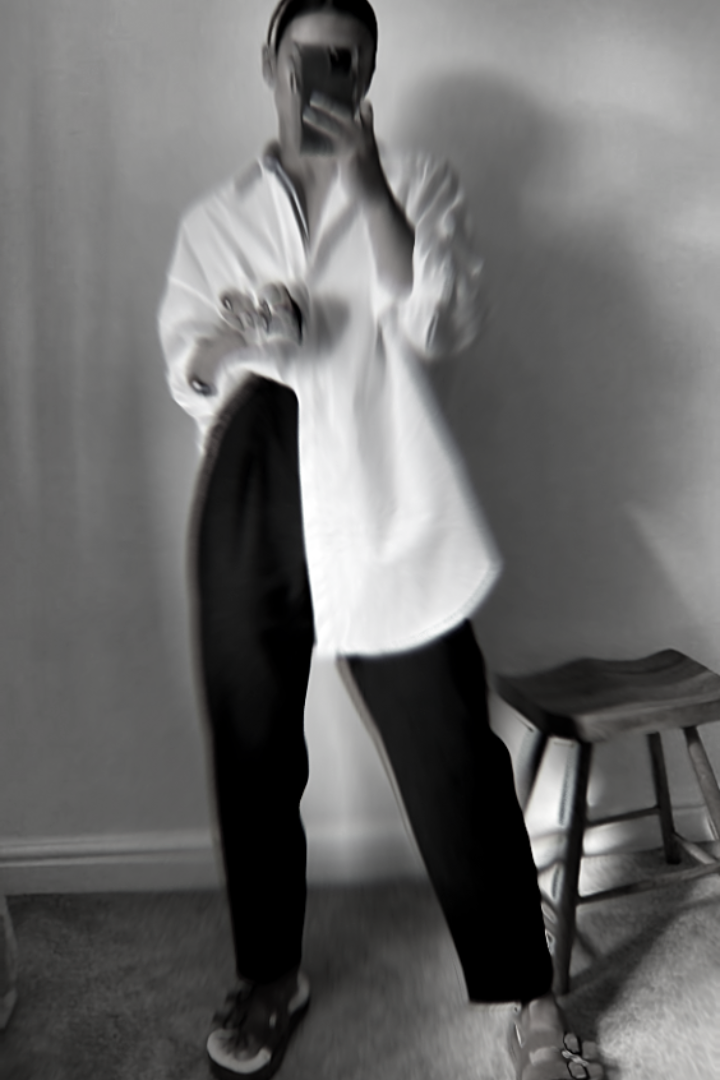The Power of Enclothed Cognition: How Your Clothes Shape Your Thoughts
When you go dressed this morning, did you have to stop and think how you felt?
What was your thought process?
What were you feeling? Happy, sad, ambitious, in love, rushed?
As you made the deep dive into your wardrobe you picked an outfit that reflected your mood, health, and overall confidence – and you probably didn’t even realise you were doing it.
……. I’ll just give you a moment to think about that.
What is Enclothed Cognition?
Enclothed cognition is the phenomenon by which the clothes we wear can influence our behaviour and cognitive processes. This idea was first proposed by two researchers, Hajo Adam and Adam Galinsky, in a 2012 study published in the journal Social Psychological and Personality Science.
The study found that participants who wore a lab coat, which was described as a "doctor's coat," performed better on attention-related tasks than those who wore the same coat described as a "painter's coat." This suggests that the symbolic meaning of the clothes we wear can have a significant impact on our cognitive abilities.
This idea is rooted in the concept of "symbolic self-completion," which means that when we wear certain clothes, we take on the traits and characteristics associated with those clothes. In other words, when we wear a lab coat, we feel more focused and attentive, because we associate lab coats with the characteristics of a scientist or doctor.
So ultimately, you are what you….wear.
But it's not just the clothes we wear, but also the way we wear them that can influence our behaviour. The way we put on, groom, or adjust our clothes can also affect our cognitive process. For example, when we put on a piece of clothing, we might adjust it to make it feel more comfortable or to fit better. This process of adjusting can help to activate certain cognitive processes, such as attention and memory.
How you can use Enclothed Cognition in your everyday life
By being aware of the way that our clothes can influence our behaviour and cognitive processes, we can make conscious choices about the clothes we wear and how we wear them.
Professor Karen Pine examined the connection between women’s emotional state and what they wore, with findings showing that many women felt they could alter their mood by changing what they wore.
“When we put on a piece of clothing on we cannot help but adopt some of the characteristics associated with it, even if we are unaware of it.”
Here are a few ways we can use enclothed cognition in our everyday life:
Use clothing to set the tone for your day. E.g. If you're going to a job interview or an important meeting, wear clothes that make you feel confident and professional. This can help to put you in the right mindset for the task at hand.
Use clothing as a mindfulness practice. Pay attention to how different clothes make you feel, and how they affect your posture, movement, and overall embodiment.
Use clothing as embodiment practice. Pay attention to how different clothes affect your posture, movement, and overall embodiment. Some clothes might make you feel more confident, others might make you feel more relaxed and comfortable.
Use clothing to express your identity. We use clothing to communicate who we are and what we stand for. Wearing clothes that reflect our values and personality can help us to feel more authentic and true to ourselves.
Use clothing to create a sense of unity. E.g. if you are part of a team or a group, wearing similar clothes can help to create a sense of unity and belonging.
Use clothing to signal your intentions. E.g. if you're going to the gym, wear workout clothes. This can help to signal to yourself and others that you're there to exercise, which can help to motivate you to work out.
Use clothing to improve your mood. If you're feeling down, try wearing clothes that make you feel good. This could be a favourite tee or something that is comfortable and soft to the touch.
Use clothing to improve focus and concentration. Wearing clothes that are associated with the task or activity you are doing can help to put you in the right mindset and improve focus and concentration.
Originally written by Georgia Christo for Homebody Club, adapted by Lucy Green.


